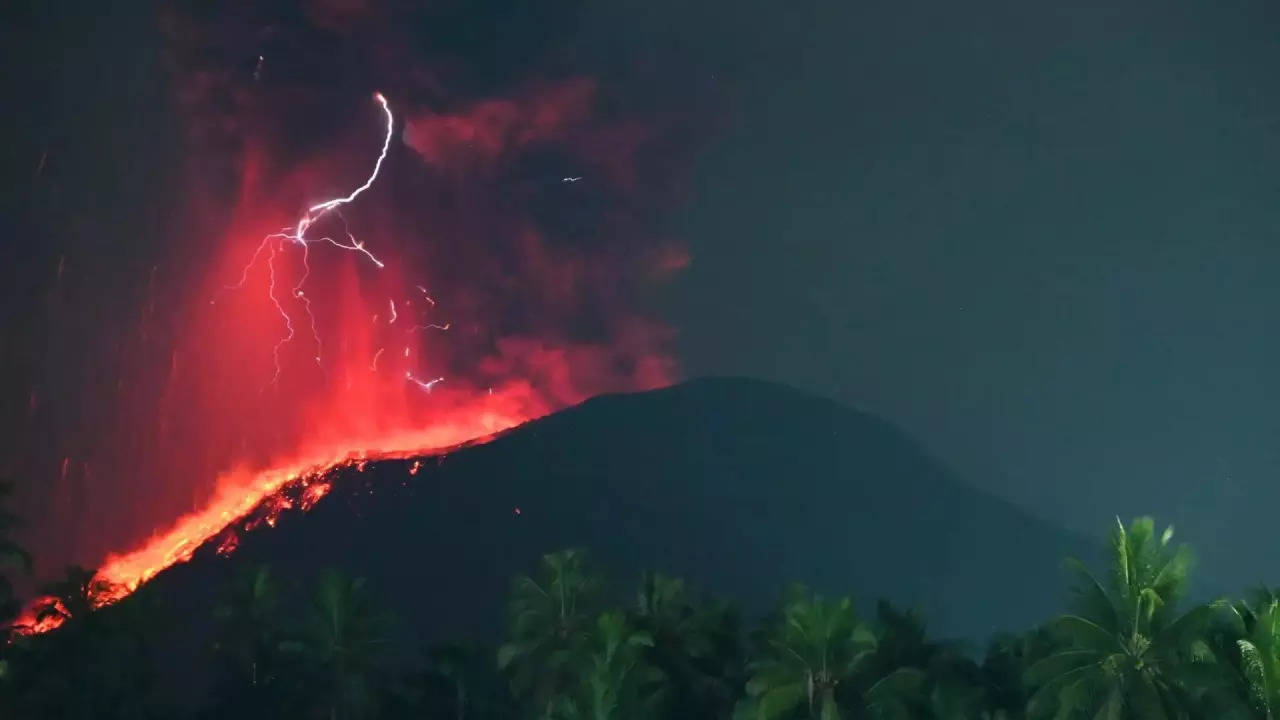NEW DELHI: In a notable advancement in volcanology, recent research promises to improve the accuracy of predicting volcanic eruptions, allowing communities near these geological giants to have increased security. By delving deep into the Earth’s crust, scientists have uncovered new methods that refine how we foresee these potential disasters.
Traditionally, volcanic predictions focused on the upper layers of the Earth’s crust, where magma forms and accumulates.However, a shift in research focus led by scientists from Imperial College London and the University of Bristol, including Dr Catherine Booth, aims deeper—up to 20 kilometers underground, at the very origin points of magma, a report in the Earth.com said.
Dr Booth highlights the study’s novel approach: “We expanded our research deeper than most prior studies, focusing on magma’s origin point where extreme heat transforms solid rock into liquid magma deep below.”
The research combines real-world observations with sophisticated computer simulations to map how magma forms and moves in deep reservoirs. These new insights challenge previous assumptions about volcanic eruptions. Dr Booth explains, “Contrary to what was previously thought, it appears that the buoyancy of magma, influenced by its temperature and chemical makeup, is a critical factor in causing eruptions.”
Magma buoyancy, the process where magma becomes lighter and rises above the surrounding rock, and the duration of magma storage at shallower depths are critical factors affecting the size and intensity of eruptions. Larger magma reservoirs, which might intuitively seem more threatening, could actually reduce eruption intensity by dissipating heat more effectively.
Co-author Professor Matt Jackson notes the implications of these findings for predictive models: “Our study not only advances our understanding of volcanic processes but also enhances the models that help predict these events.” However, he acknowledges the limitations in current models, such as underestimating factors like water and carbon dioxide in magma or lateral magma flows.
As the team looks to further refine their models, they aim to incorporate more complex scenarios like three-dimensional flow dynamics and varying fluid compositions. This ongoing research is poised to significantly improve our predictive capabilities, potentially saving lives and reducing the economic impact of volcanic eruptions.
The findings of this transformative study are detailed in the journal Science Advances, paving the way for a future where more accurate and timely predictions of volcanic activity can provide a lifeline to those living under the threat of an eruption.
Traditionally, volcanic predictions focused on the upper layers of the Earth’s crust, where magma forms and accumulates.However, a shift in research focus led by scientists from Imperial College London and the University of Bristol, including Dr Catherine Booth, aims deeper—up to 20 kilometers underground, at the very origin points of magma, a report in the Earth.com said.
Dr Booth highlights the study’s novel approach: “We expanded our research deeper than most prior studies, focusing on magma’s origin point where extreme heat transforms solid rock into liquid magma deep below.”
The research combines real-world observations with sophisticated computer simulations to map how magma forms and moves in deep reservoirs. These new insights challenge previous assumptions about volcanic eruptions. Dr Booth explains, “Contrary to what was previously thought, it appears that the buoyancy of magma, influenced by its temperature and chemical makeup, is a critical factor in causing eruptions.”
Magma buoyancy, the process where magma becomes lighter and rises above the surrounding rock, and the duration of magma storage at shallower depths are critical factors affecting the size and intensity of eruptions. Larger magma reservoirs, which might intuitively seem more threatening, could actually reduce eruption intensity by dissipating heat more effectively.
Co-author Professor Matt Jackson notes the implications of these findings for predictive models: “Our study not only advances our understanding of volcanic processes but also enhances the models that help predict these events.” However, he acknowledges the limitations in current models, such as underestimating factors like water and carbon dioxide in magma or lateral magma flows.
As the team looks to further refine their models, they aim to incorporate more complex scenarios like three-dimensional flow dynamics and varying fluid compositions. This ongoing research is poised to significantly improve our predictive capabilities, potentially saving lives and reducing the economic impact of volcanic eruptions.
The findings of this transformative study are detailed in the journal Science Advances, paving the way for a future where more accurate and timely predictions of volcanic activity can provide a lifeline to those living under the threat of an eruption.
Denial of responsibility! Swift Telecast is an automatic aggregator of the all world’s media. In each content, the hyperlink to the primary source is specified. All trademarks belong to their rightful owners, all materials to their authors. If you are the owner of the content and do not want us to publish your materials, please contact us by email – swifttelecast.com. The content will be deleted within 24 hours.


